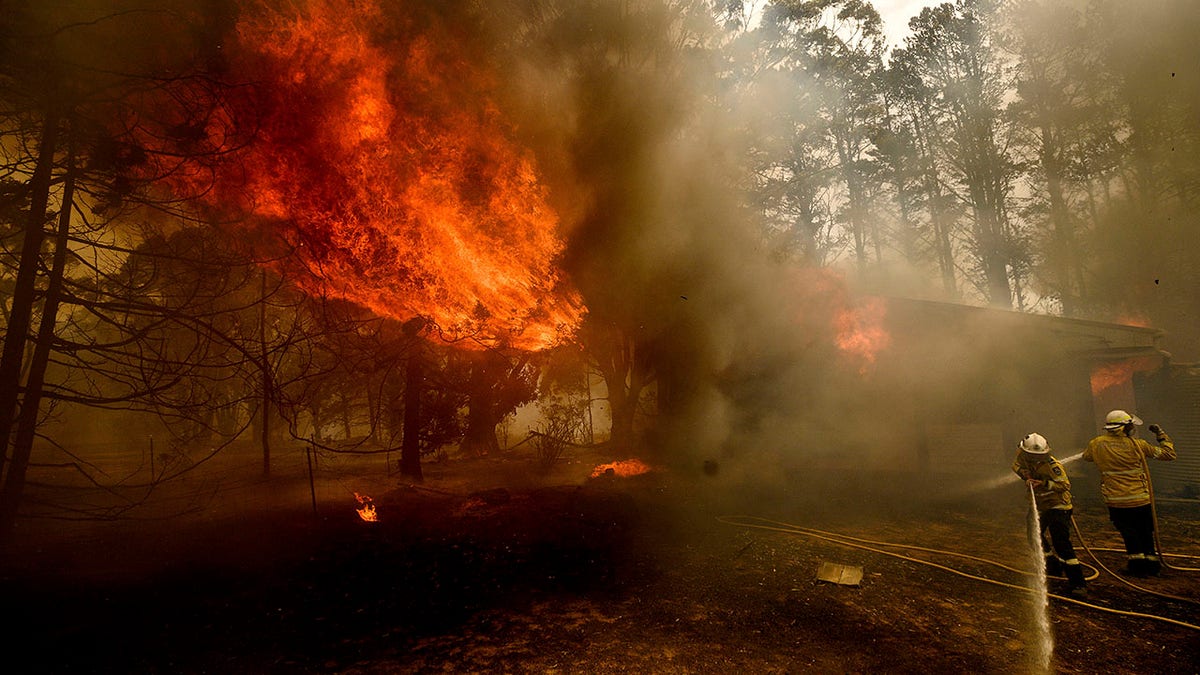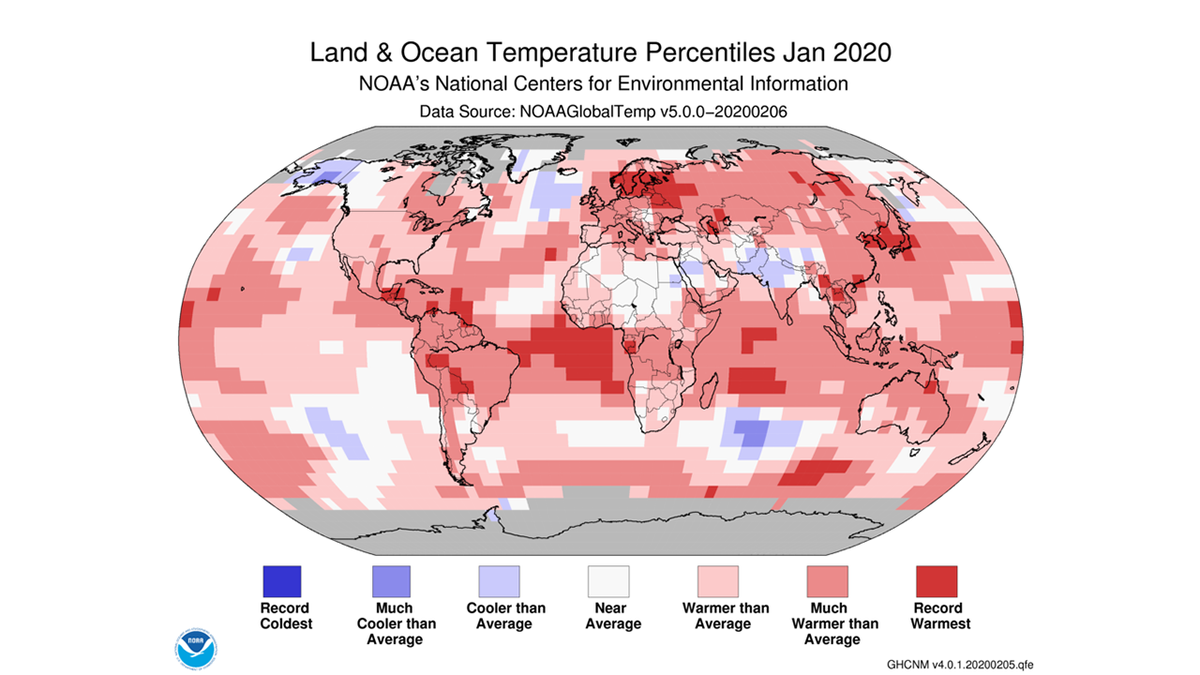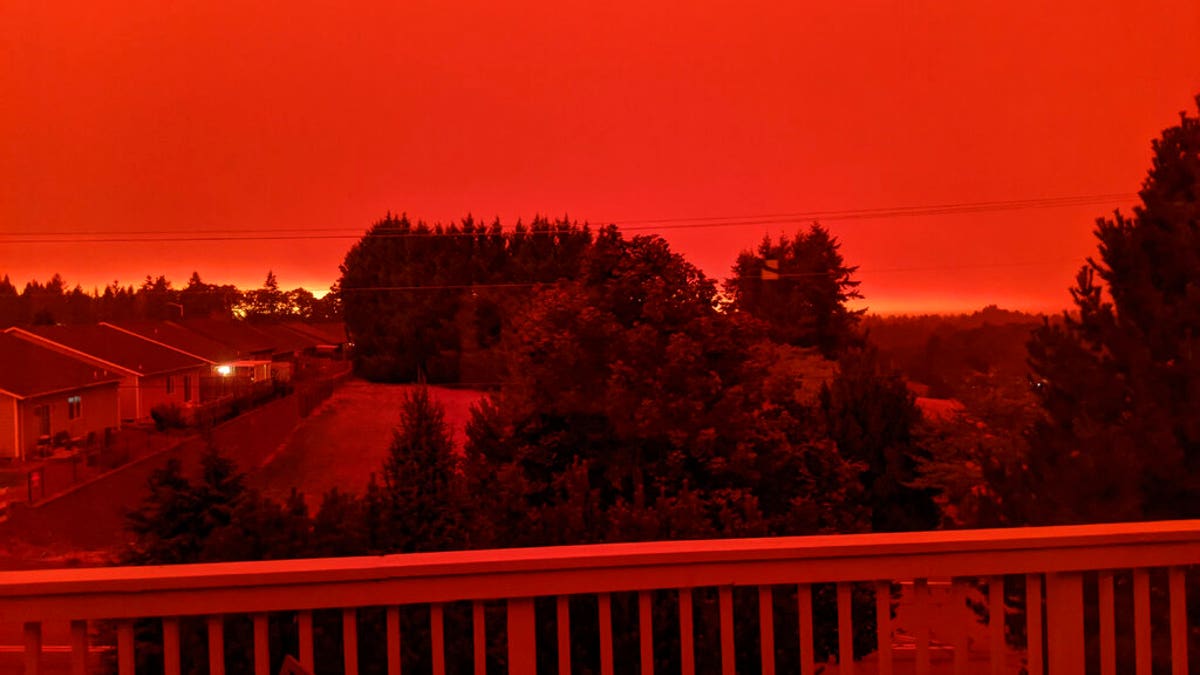Hurricane Delta makes landfall, widespread power outages reported
Delta, now a tropical storm, made landfall Friday night, bringing widespread power outages to Louisiana.
The coronavirus pandemic easily dominated the headlines in 2020, but it was also a year for record-breaking weather systems and storms.
The Southeast was slammed witha a record-breaking breaking number of hurricanes and tropical storms. Some areas were barely able to recover before the next storm hit.
Meanwhile, wildfires, some of which were sparked by lightning storms and a now-infamous gender reveal party, ravaged the West Coast.
Here are some of the most memorable weather moments from 2020:
Months of wildfires scorch Australia until flash floods contain the blazes
As the coronavirus started to spread in China, wildfires were burning hot across Australia.

A blaze on Canberra's southern fringe that has razed more than 53,000 acres since it was sparked by heat from a military helicopter landing light on Monday, officials say. (AP)
Headlines focused on the out-of-control blazes that had started in July 2019 but had grown to an unfathomable situation that was threatening to grow more severe by the time 2020 began.
Early January reports discussed fears that the fires could have combined into a "mega blaze" that would have been nearly impossible to contain.
It seemed like relief came in February as heavy rains helped quench the blazes. But instead of respite, the fires gave way to flash flooding along the east coast. By March, New South Wales reported no more wildfires for the first time in more than 240 days.

Firefighters battle the Morton Fire as it consumes a home near Bundanoon, New South Wales, Australia, Thursday, Jan. 23, 2020. (AP Photo (AP Photo/Noah Berger)
In all, Australia's wildfires killed at least 33 people and destroyed more than 3,000 homes. Nearly 3 billion animals were displaced.
Hottest January on Record
January hit its highest average level in the 141 years on record in 2020.
NOAA said the first month of the year was 2.05 degrees Fahrenheit (1.14 degrees Celsius) above the average January temperatures for the 20th century.
Unsurprisingly, the regional ground heat during the month meant that no land or ocean areas experienced record-cold temperatures, and experts linked the temperatures to a lack of snow, globally.
Snow coverage in the Northern Hemisphere was below the 1981-2020 average.
A record number of named storms in historic hurricane season
When it came to the weather, one headline dominated more than any other: There was a record-breaking number of tropical storms and hurricanes in the Atlantic during 2020.

This enhanced satellite image made available by NOAA shows Tropical Storm Florence, upper left, in the Atlantic Ocean on Tuesday, Sept. 11, 2018 at 3:30 p.m. EDT. At center is Tropical Storm Isaac and at right is Hurricane Helene. (NOAA via AP)
The National Oceanic and Atmospheric Administration forecasted up to 25 named storms in the season, but there were 30 named storms. It was the most since 2005’s haul of 28 storms.
The National Weather Center had to start naming storms after the Greek alphabet, getting as far as Hurricane Iota. NOAA dips into the Greek Alphabet after 21 named storms occur.
Of those 30 storms, half-developed into hurricanes. Only 12 made landfall, but they left their mark on the continental United States.

A man from NOAA's National Centers for Environmental Information showing the scope of warmer-than-average temperatures across the globe in January 2020. (NOAA)
Louisiana hit with two Category 2 hurricanes in October
No state felt the weight of the hurricane season like Louisiana, which saw as many as five systems make landfall in the state in 2020.
That count included Category 2 Hurricanes Delta and Zeta, both of which made landfall in October to cap off the devastating season.
Both hurricanes left hundreds of thousands without power after passing through the state, but each had relatively small death tolls.
Hurricane Laura, which made landfall at the end of August, took dozens of lives and left the state in a lurch ahead of the catastrophic October.
The sky turns orange over California, Oregon
If it wasn’t hurricanes, then headlines were littered with news of the many wildfires that burned along the West Coast during the summer.

In this photo provided by Frederic Larson, the Golden Gate Bridge is seen at 11 a.m. PT, Wednesday, Sept. 9, 2020, in San Francisco, amid a smoky, orange hue caused by the ongoing wildfires. (Frederic Larson via AP)
At one point, the National Weather Service tweeted that it recorded an "unprecedented amount of smoke in the atmosphere as a record number of acres burn across California & the West."
Twice over the summer, residents in the Bay Area could look up and see orange skies as a result of the fires and the smoke.

This photo taken from the home of Russ Casler in Salem, Ore., shows the smoke-darkened sky well before sunset at around 5 p.m., Tuesday, Sept. 8, 2020. Strong winds and high temperatures continued to fuel catastrophic fires in many parts of Oregon on Wednesday, forcing thousands of people to flee from their homes and making for poor air quality throughout the West. Huge wildfires also continued to grow in neighboring Washington state. (Russ Casler via AP)
The earlier July instance was bizarre enough, but it could not match the incandescent glow of the sky on Sept. 9, which was almost like something you’d expect to see on Mars.
The phenomenon stretched along much of the West Coast, with residents in California and Oregon.

Four other named storms have made landfall in Louisiana so far in 2020. (Fox News)
Twin storms hit the Gulf Coast simultaneously
In August, two storm systems formed in the Gulf of Mexico for the first time in almost 100 years at the peak of the hurricane season.
Tropical Storms Laura and Marco both gathered strength as they moved into the Gulf, making it difficult to predict their potential impact. Forecasters said the two storms had the potential to merge -- a scenario that, thankfully, did not happen.
"This is the latest in the calendar year that the Atlantic hurricane season has had two named storms simultaneously since November 10, 1932," Colorado State University hurricane researcher Phil Klotzbach tweeted.
Laura ended up strengthening into a Category 4 hurricane while Marco peaked at a Category 1 by the time each made landfall.
Hurricane-force winds flip 45 semi-trucks
People don’t usually read about Utah and hurricanes in the same sentence, but in September, 100 mph winds tore through Salt Lake City.
The powerful winds brought a snowstorm over the Rockies, but, perhaps more impressively, they flipped at least 45 semi-trucks, according to the Utah Highway Patrol.
The winds also wreaked havoc around the city by bringing down powerlines and leaving more than 100,000 residents without power at the time.
Antarctica hits 69 degrees for the first time
The coldest place on Earth had its hottest day on record in February when Antarctic temperatures reached 69.35 degrees Fahrenheit.

Antarctica experienced its single hottest day ever recorded this month, hitting a high of 69.35 degrees Fahrenheit on Feb. 9, according to Argentine researchers. (AP Photo/Rodrigo Jana)
The new record beat the previous record by one degree, but it wasn’t the first record that month: the Antarctic Peninsula (the continent's northwest tip, which is closest to South America) reported a high of 64.9 F, which beat the previous record for the area by 1.4 degrees.
The new high temperature was recorded at Argentina's Marambio research base, located on Seymour Island, part of an island chain off the coast of the Antarctic Peninsula.
Six waterspouts appear in the Gulf of Mexico
One of the more stunning sights this year in weather was the video of a rare sight in the Gulf of Mexico.
The incredible part wasn’t the number of spouts but the fact that they were so close they appeared in the same video.
The waterspouts formed ahead of tropical depression 13 and 14 as they moved into the gulf.
Sheriffs issue ticket to Mother Nature for "illegal dumping" after June snow in the Rockies
In such a crazy year, it’s no surprise that the weather was crazy as well. Some states had snow throughout the year – even in the summer.
The height of the spontaneous snow hit in Idaho and Montana in June. A foot of snow was dumped in the Rockies just days before the summer solstice.
The unexpected snow baffled residents so much that sheriffs in Idaho’s Blaine County jokingly issued a ticket to Mother Nature for "illegal dumping."
"If you see her please show her a calendar. She thinks it's January," the sheriff's office said.
Extreme dry conditions allowed for intense West Coast wildfires
One of the most circulated stories of the past year involved an unusual origin for one of the incredible wildfires that burned along the West Coast over the summer.
The conditions over the summer were extremely dry with low humidity. Frequent lightning storms and Santa Ana Winds brought down electrical equipment, all to spark off wildfires that could burn hundreds of acres and uproot thousands of people.
The most notorious fire origin belonged to the El Dorado Fire that burned near Glen oaks in San Bernardino County. The flames were ignited by "a smoke generating pyrotechnic device, used during a gender reveal party," Cal Fire revealed in a statement at the time.
CLICK HERE TO GET THE FOX NEWS APP
The ensuing fire required more than 500 personnel to help contain it.




